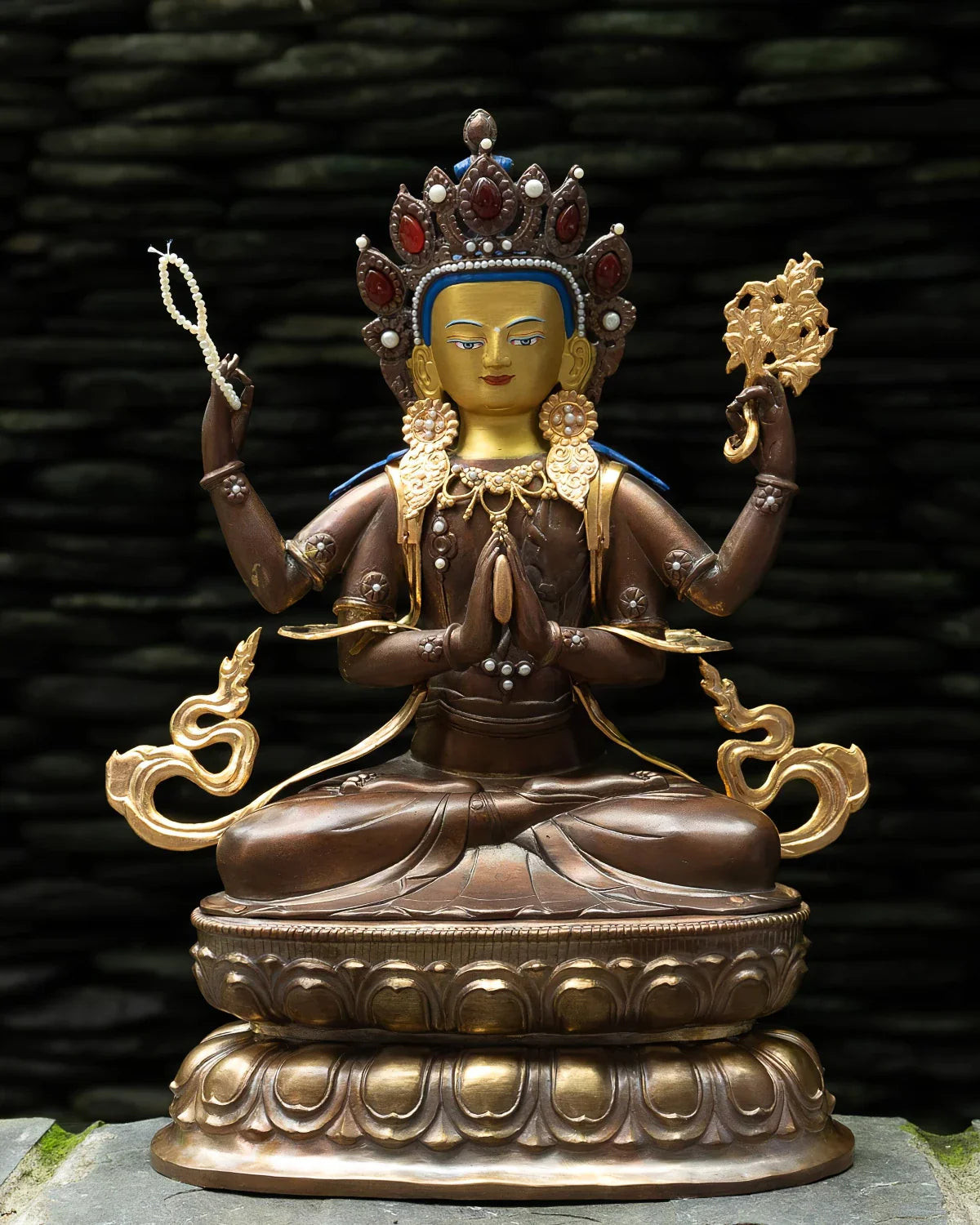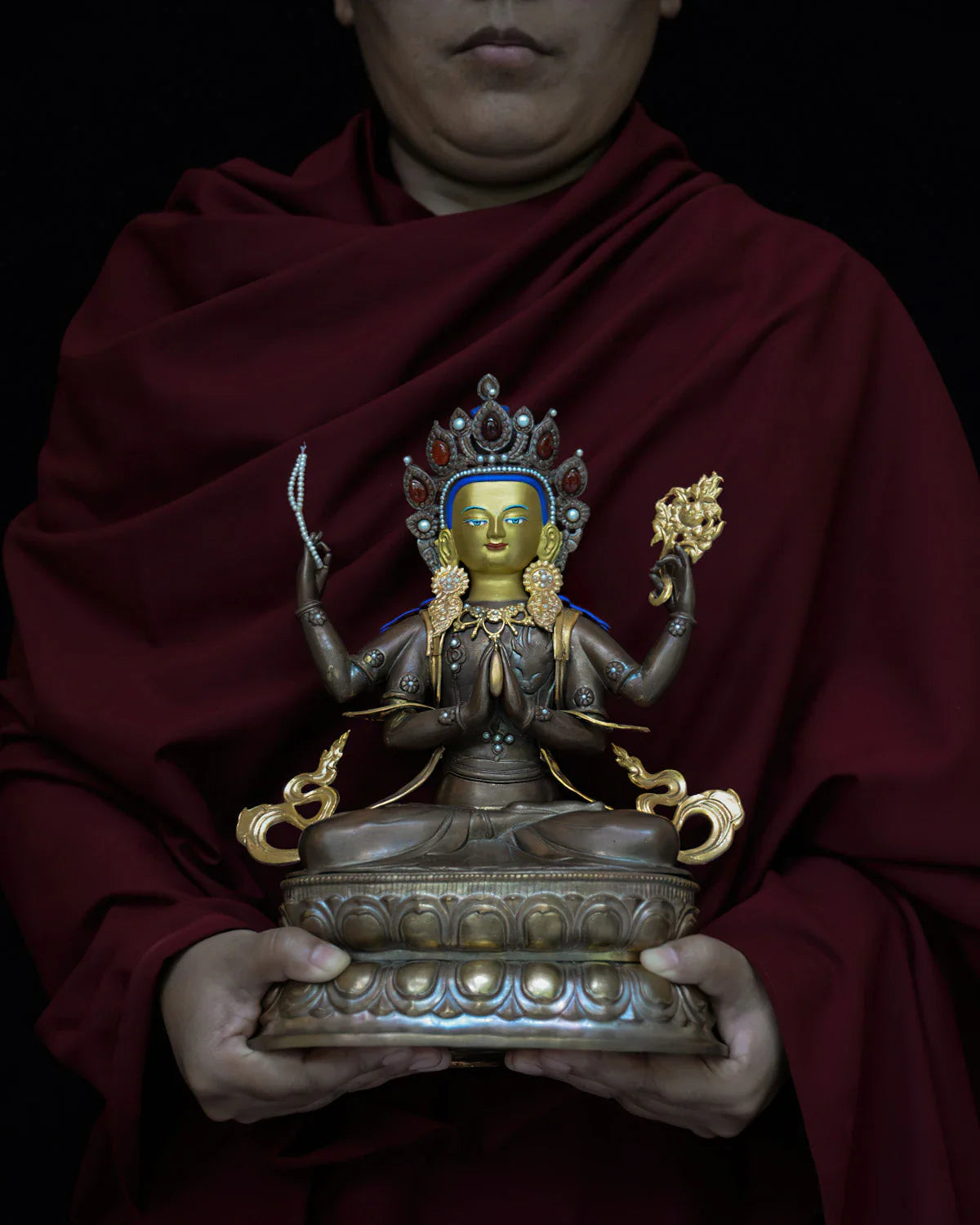


Avalokiteshvara 12-inch
Avalokiteshvara is the embodiment of the compassion of all beings – both the enlightened and those striving for enlightenment. Compassion is fundamental to developing bodhicitta, or the awakening mind, which is the foundation of the Mahayana vehicle, and so Avalokiteshvara is often regarded as the most important deity in the Mahayana pantheon. The Dalai Lama is thought to be an earthly manifestation of Avalokiteshvara.
Two forms of Avalokiteshvara are most popularly portrayed in the Tibetan tradition – a thousand-armed, and a four-armed. He is depicted here in his more peaceful four-armed form, seated upon a great lotus flower. The white rosary in his right hand represents his aspiration to liberate all beings from ignorance and rebirth, while the lotus in his left signifies his transition from a mind contaminated by ignorance to one of perfect Buddhahood. His two folded hands represent his power to gather the requisite conditions through which his compassionate intentions will be fulfilled. He is often depicted in a triad with Manjushri and Vajrapani known as Rigsum Gonpo, symbolizing the qualities necessary for enlightenment – compassion, wisdom, and power.
Our statues are created strictly following proportions as they are laid out in Buddhist scripture. The face of each statue is painted by our thangka section with 24k gold paint, which has a matte look and reflects light similar to how skin does. The ornaments and hand tools are then gold plated and adorned with semi-precious gems.
The Cast statue rests on a hand-beaten lotus base.
Craftsmanship
Choose options




